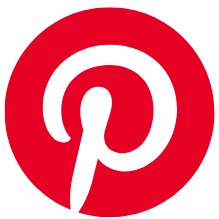Download your FREE Magnetic Magic guide!
Social Media and Affiliate Marketing Success
Become an affiliate marketer, they said. You'll be an instant millionaire, they said.
Pam Seino
11/5/20256 min read


Let me paint the picture for you, because I’m an excellent artist (and I’m clairvoyant).
You heard that affiliate marketing is the easiest and fastest way to make money online, so you sprinted over to GoDaddy, bought your domain, signed up for a few affiliate programs, and started posting to all your social media channels. Then you sat back and waited gleefully for the sales to start rolling in.
The problem is, they didn’t. WTH? you think — all those YouTube videos you watched said you could make thousands every month.
Yeah, I feel you. We’ve all been there.
So let me ask you: Want affiliate sales to grow faster and gain traction? After all, you’ve posted your face off on all your SM platforms. Here’s the deal: Treat social media like a performance channel, not a pastime. That means building trust, matching content to platform intent, and making it impossible for people not to click, save, and buy — while staying fully compliant.
Oh and by the way — make sure you’re actually offering VALUE. Don’t just get in your audience’s face and ask them to buy from you. Ask yourself this question: “Would I buy from someone I don’t know?” I mean maybe, but…probably not. This article will provide clarity on the secrets to social media and affiliate marketing success.
1) Foundations: trust, clarity, and the “1-Click Path”
Trust beats tactics. Use real experience, clear disclosures, and outcomes your audience can imagine. On every post:
A crisp hook (benefit or problem)
1–2 proof points (demo, screenshot, mini-case, or before/after)
A single, obvious call to action (CTA)
A 1-click path from post → product (bio link/Shop tab/Pin link/YouTube description top-link)
Compliance = credibility. The FTC requires clear, unavoidable disclosures any time you have a material connection (affiliate link, commission, free sample). “#ad” or “(paid link)” must be easy to see and understand—don’t hide it in a sea of hashtags or at the very end of a caption.
2) Platform-by-platform playbooks
Instagram (Posts, Reels, Stories)
How it’s ranked. Instagram uses multiple algorithms across Feed, Reels, and Explore that weigh signals like user activity, post info, and interaction history. Translation: relevance and engagement quality matter more than volume. Publish where your audience already interacts with you, and encourage saves/shares.
Best practices
Lead with a “why to care” hook in the first 2 lines; put your affiliate link path in the first comment or bio link if needed.
Show, don’t tell: quick demo clips, UGC, or side-by-side comparisons.
Use carousels for “mini reviews” (Slide 1: promise; Slides 2–4: features/benefits; Final slide: CTA + disclosure).
Pin your disclosure in Stories (Sticker text like “Affiliate link—no extra cost”).
Reels: front-load the benefit in 1–2 seconds; add on-screen disclosure (e.g., “includes affiliate link”) to keep it unavoidable.
YouTube (Long-form, Shorts, Lives)
Disclosure & settings. If your video includes paid promotion or affiliate endorsements, YouTube requires you to select the “paid promotion” setting and follow FTC guidance. Put the disclosure verbally early in the video and at the top of your description. Google Help+2Google Help+2
Best practices
Structure: Hook (0–10s) → Outcome recap (what viewers will know/save/avoid) → Demo/receipts → Objections → CTA.
Put your #1 affiliate link above the fold in the description with a benefit-driven label, plus timestamps that point to the demo moment.
Shorts: treat like an ad’s first 3 seconds—benefit, reveal, CTA to description/pinned comment. Re-affirm disclosure on-screen.
TikTok (Short-form + Live Shopping)
TikTok requires clear branded-content disclosure (toggle on “Disclose commercial content”). Undisclosed content can be suppressed from the For You feed. Pair short, authentic trials with text overlays showing price, key benefit, and discount code.
Best practices
3 angles to rotate: “POV problem → fix,” “3 things I wish I knew,” “Does it actually work?” (quick test).
Put the link path in bio, Link-in-Bio tools, or TikTok Shop when eligible; answer questions in comments to boost watch loops.
Pinterest (Evergreen intent)
Set up a free Pinterest Business account for analytics and access to product tagging and paid options. You can tag products, collaborate on paid partnerships, and earn from affiliate links—just follow merchant and partnership guidelines. Create Idea Pins for step-by-steps and standard Pins for evergreen search.
Best practices
Use keyword-rich titles/descriptions (think “benefit + product type + audience”).
Create “mini blog post” Idea Pins: Frame 1 promise, Frames 2–5 steps or features, final frame CTA + disclosure.
Refresh top performers quarterly with new images and seasonal keywords.
3) Content that converts (steal these formats)
Problem → Proof → Pitch (PPP)
Problem: “My meal prep kept falling apart mid-week…”
Proof: quick clip/results/UGC quote.
Pitch: the tool and who it’s for, with disclosure.
Demo with Decision-Aid
30–60s walkthrough; overlay “Who it’s for / Not for” and “Try if you need ____.”
Stacked Social Proof
Clip 1: your results.
Clip 2: customer review screenshot (with permission).
Clip 3: third-party rating/stat. End with CTA + disclosure.
Comparison Grid (Carousel/Pin)
Columns: Feature | Option A | Option B | Your Pick (why).
Link all three (yes—affiliate both, if policy allows).
FAQ Live Reply
Turn common comment questions into snappy Reels/Shorts; answer and re-show the CTA link path.
4) Posting cadence & workflow (DMO you can keep)
3 content pillars/week: Problem-Solving Demo, Social Proof, Quick Tip/Use-Case.
Cadence: IG (4–5/wk), TikTok (5–7/wk short), YouTube (1 long + 2–3 Shorts), Pinterest (5–10 fresh Pins/Idea Pins).
Weekly block: 90 minutes to batch record 8–10 short clips; 45 minutes to write captions and schedule Pins.
5) Conversion plumbing (so clicks become sales)
Link hygiene: Use UTM tags per platform & campaign (e.g., utm_source=instagram&utm_medium=organic&utm_campaign=product_x_review).
One link hub: Update Link-in-Bio weekly with your top 3 products; mirror those links in Stories/Highlights and Pin Boards.
Speed to cart: When possible, link to the exact product page, not a homepage. Create “Starter Kit” bundles for higher AOV.
Retargeting: Build audiences from video viewers and site visitors; retarget with “still on the fence?” proof posts.
6) Measurement that actually guides you
Track per-post: Saves/Shares (intent), Profile clicks (interest), CTR (path), EPC (earnings per click).
Compare formats by EPC, not likes. If Reels get fewer likes but 2× EPC, post more Reels.
Pinterest: watch Saves and Outbound Clicks across 30–90 days; optimize Pin titles and first image.
7) Disclosures & policy quick-guide (copy/paste)
When in doubt, disclose. Put it where people will see or hear it immediately.
Caption/Pin text examples
“This post includes affiliate links—if you buy, I may earn a commission at no extra cost to you.”
“Paid partnership / affiliate link—thank you for supporting my small business.”
On-screen (video)
Text overlay in the first seconds: “Affiliate link included.”
Verbal: “This video includes affiliate links. If you purchase, I may earn a commission.”
YouTube
Toggle Paid promotion; keep disclosure at the top of your description and early in the script. Google Help
TikTok
Turn on the Disclose commercial content/Branded Content toggle before posting. Bazaarvoice
General FTC
Disclosures must be clear, conspicuous, and unavoidable—not buried or ambiguous (e.g., “thanks to X” isn’t enough).
8) Safety, brand suitability & audience care
Meta documents how content distribution works and updates safety features regularly; stay current and use sensitive-content filters, comment filters, and privacy controls, especially if you feature minors or health topics. This protects your brand and audience as algorithms evolve. Facebook+1
9) 7-Day action plan
Day 1: Define 3 product picks, one “hero” to push for 30 days.
Day 2: Build your 1-click path (bio link hub + YouTube description templates + Pin boards).
Day 3: Script & record 6 short videos (3 angles × 2 cuts).
Day 4: Create 3 Instagram carousels (comparison, mini-review, FAQ).
Day 5: Publish an Idea Pin + 3 standard Pins for the hero product.
Day 6: Upload a 6–8 minute YouTube review with chapters and top-link CTA (toggle Paid Promotion if applicable).
Day 7: Review EPC & CTR; double down on the winning format next week.
Sources & further reading
FTC Endorsement Guides (what to disclose & how: “clear, conspicuous, unavoidable”).
Instagram creator guidance on algorithms/ranking.
Meta Business Help (how Facebook distributes content).
YouTube Help (paid promotion setting & affiliate guidance for videos/Shorts/Live).
Pinterest Business (business accounts, creators, product tagging/paid partnerships).
Sign up for my Affiliate Marketing Secrets course - it launches December 1, 2025 and you are eligible for pre-launch pricing! Just tell me where to send the course updates: ⬇️





